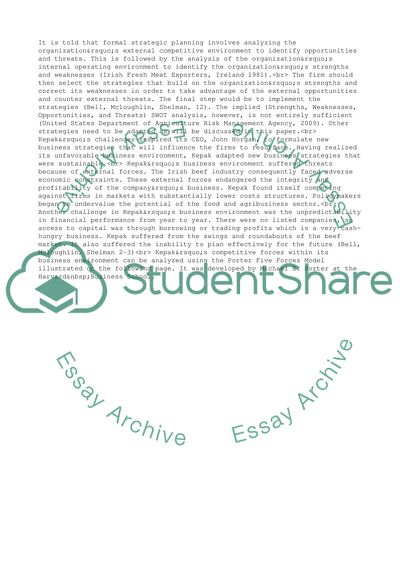Cite this document
(Kepak and the Future of the Irish Beef Industry Case Study, n.d.)
Kepak and the Future of the Irish Beef Industry Case Study. Retrieved from https://studentshare.org/management/1620330-you-are-to-produce-a-review-of-the-strategic-situation-of-kepak-the-irish-meat-company-based-on-the-provided-case-study-kepak-and-the-future-of-the-irish-beef-industry
Kepak and the Future of the Irish Beef Industry Case Study. Retrieved from https://studentshare.org/management/1620330-you-are-to-produce-a-review-of-the-strategic-situation-of-kepak-the-irish-meat-company-based-on-the-provided-case-study-kepak-and-the-future-of-the-irish-beef-industry
(Kepak and the Future of the Irish Beef Industry Case Study)
Kepak and the Future of the Irish Beef Industry Case Study. https://studentshare.org/management/1620330-you-are-to-produce-a-review-of-the-strategic-situation-of-kepak-the-irish-meat-company-based-on-the-provided-case-study-kepak-and-the-future-of-the-irish-beef-industry.
Kepak and the Future of the Irish Beef Industry Case Study. https://studentshare.org/management/1620330-you-are-to-produce-a-review-of-the-strategic-situation-of-kepak-the-irish-meat-company-based-on-the-provided-case-study-kepak-and-the-future-of-the-irish-beef-industry.
“Kepak and the Future of the Irish Beef Industry Case Study”, n.d. https://studentshare.org/management/1620330-you-are-to-produce-a-review-of-the-strategic-situation-of-kepak-the-irish-meat-company-based-on-the-provided-case-study-kepak-and-the-future-of-the-irish-beef-industry.


